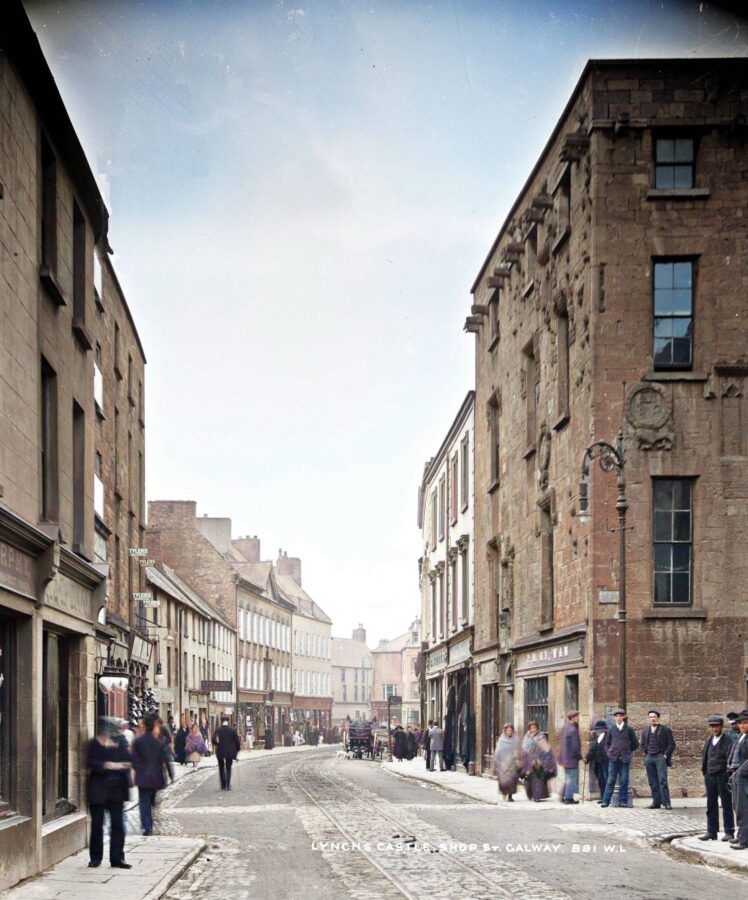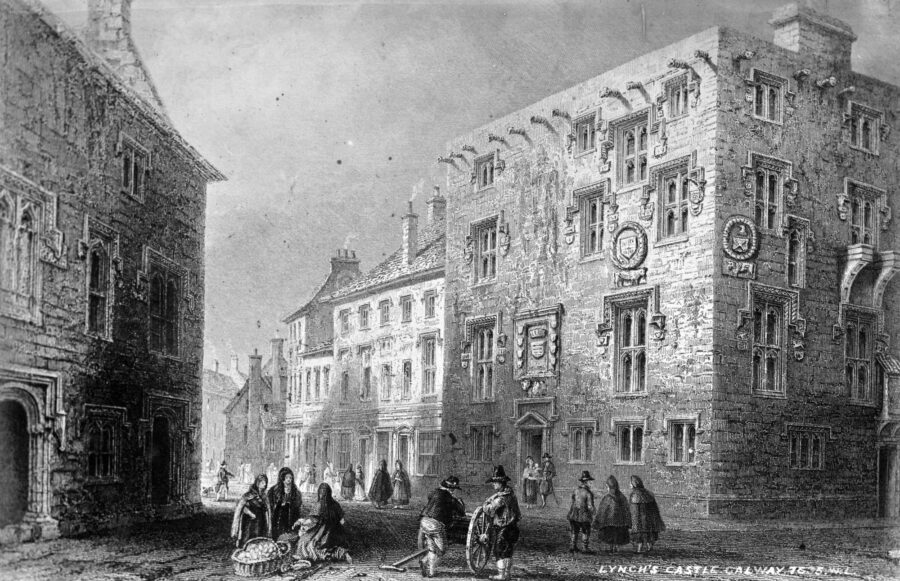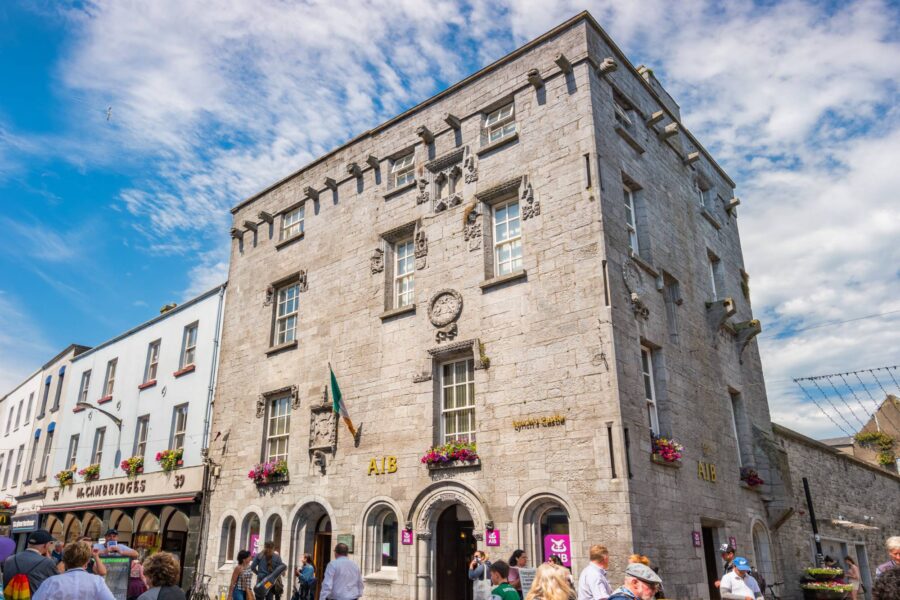Discovering the History of Lynch's Castle, Galway, Ireland - A Gem in the Heart of the City
Discovering the History of Lynch's Castle, Galway, Ireland - A Gem in the Heart of the City
Lynch’s Castle, Galway, a stunning architectural gem, stands tall as one of the last remaining medieval townhouses in Ireland. Rich in history and culture, this four-story limestone building has witnessed the rise and fall of the prominent Lynch family, who played a significant role in Galway’s development. In this comprehensive article, we will delve into the captivating history of Lynch’s Castle, Galway, and explore its significance in Ireland’s heritage.
The Early Years of Lynch’s Castle, Galway
The Origins of the Lynch Family
To understand the history of Lynch’s Castle, Galway, we must first acquaint ourselves with the influential Lynch family. Originally from Normandy, they migrated to Ireland during the 13th century. The Lynches were part of the “Tribes of Galway,” a group of 14 merchant families who ruled the city from the late Middle Ages until the early 17th century. They held various positions, including mayors and magistrates, and significantly contributed to the growth of the city’s trade and economy.
Construction and Early Architecture
The exact date of construction of Lynch’s Castle, Galway, remains uncertain, but it’s believed to have been built in the late 15th or early 16th century. The castle’s architecture is a fine example of late Gothic style, showcasing an exquisite blend of military and domestic elements. The facade features intricate carvings, including the Lynch family’s coat of arms, religious symbols, and decorative motifs.

Key Features and Architectural Highlights of Lynch’s Castle, Galway
The Exterior
Lynch’s Castle, Galway, boasts an impressive exterior, marked by ornate carvings and Gothic motifs. The castle’s coat of arms, with its intricate design, signifies the family’s wealth and social status. A carving of the Crucifixion and the Sacred Heart of Jesus, along with other religious symbols, reflects the strong Catholic faith of the Lynches. Moreover, the addition of gargoyles and the inclusion of defensive features, like machicolations, demonstrate the castle’s dual role as a residence and a stronghold.
The Interior
The interior of Lynch’s Castle, Galway, is equally striking, showcasing a well-preserved medieval ambiance. The castle consists of four floors, with each level designed for specific purposes. The ground floor served as a storage and business area, while the upper floors were dedicated to living quarters, reception rooms, and private chambers. The vaulted ceilings, limestone walls, and the presence of a garderobe (medieval toilet) highlight the building’s practical and aesthetic aspects.

The Rise and Fall of the Lynch Family
The Lynches’ Pivotal Role in Galway’s History
The Lynch family played a crucial role in shaping Galway’s history. They were instrumental in establishing trade links with continental Europe, which in turn allowed the city to flourish economically. The family’s influence extended far beyond Galway, as evidenced by their involvement in Irish politics and alliances with other powerful families.
The Decline of the Lynch Family and Lynch’s Castle, Galway
The demise of the Lynch family began in the 17th century, following Ireland’s Confederate Wars and the Cromwellian conquest. Their influence waned, and they eventually lost ownership of Lynch’s Castle, Galway. The castle underwent several changes of hands, with each new occupant making alterations to the structure. By the 18th century, the once-glorious Lynch’s Castle, Galway, was no longer in the hands of its original owners and faced a period of neglect.
Lynch’s Castle, Galway – From Abandonment to Restoration
The Castle’s Transformation Over the Centuries
Over the centuries, Lynch’s Castle, Galway, underwent numerous transformations. It served various purposes, such as a barracks during the Napoleonic Wars, a residence for local gentry, and even as commercial premises in the 19th century. Despite these changes, the castle’s core structure remained intact, albeit with some modifications to accommodate its new uses.

The Restoration of Lynch’s Castle, Galway
The 20th century saw a renewed interest in preserving Ireland’s historical heritage. Lynch’s Castle, Galway, was no exception. Recognizing its cultural significance, the Munster & Leinster Bank (now Allied Irish Banks “AIB”) acquired the property in 1930 and embarked on a massive restoration project. The restoration aimed to preserve the original architecture while incorporating modern facilities to make the castle functional as a bank. Today, Lynch’s Castle, Galway, continues to house an AIB branch, ensuring the building’s survival and public accessibility.
Lynch’s Castle, Galway – A Living Monument
A Popular Tourist Attraction
Lynch’s Castle, Galway, has emerged as a popular tourist attraction, drawing visitors from around the world. As a living testament to Galway’s rich past, the castle provides a unique glimpse into the city’s medieval history. Tourists can marvel at the well-preserved architecture, explore the carvings on the facade, and immerse themselves in the castle’s storied past.

Did you find this helpful?
IrishHistory.com is a website that relies on community contributions to help make it better. If you have a suggestion to improve this page, or have spotted any errors, please click ‘Suggest an Edit’
